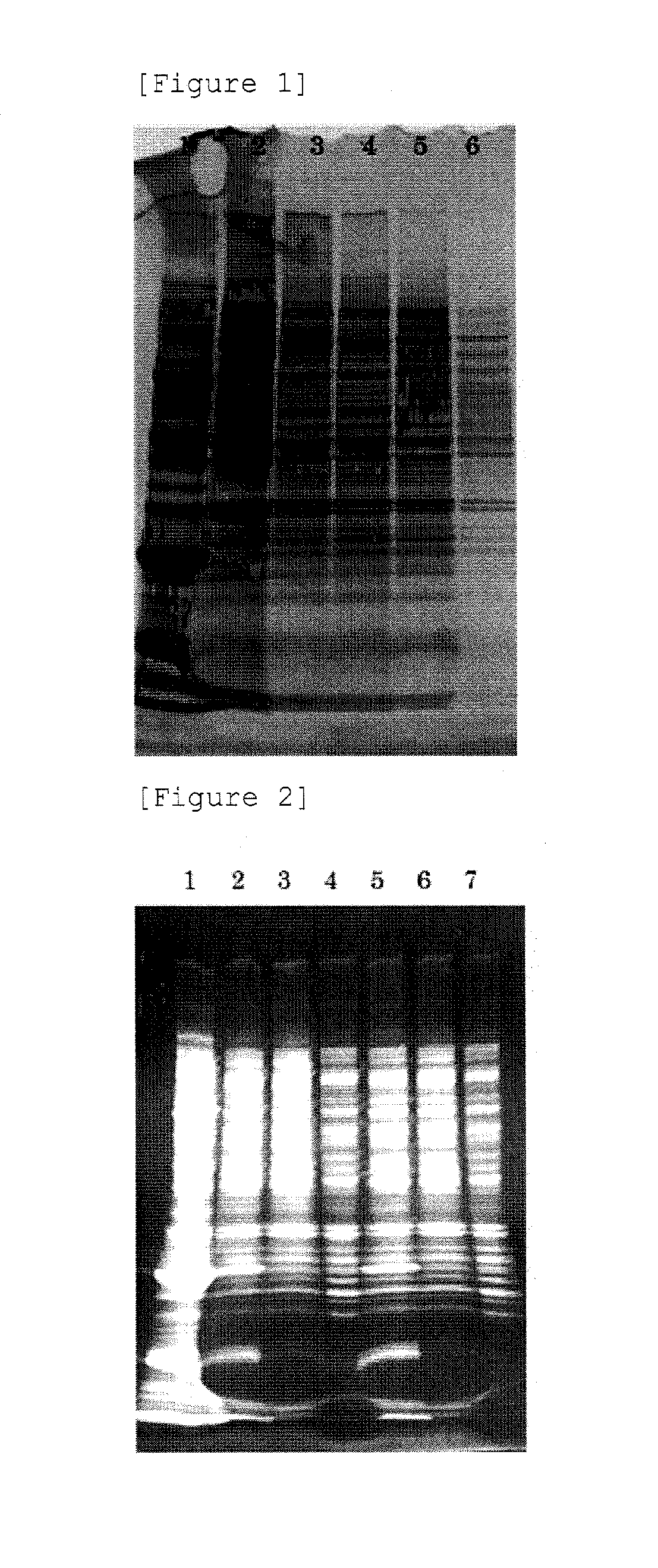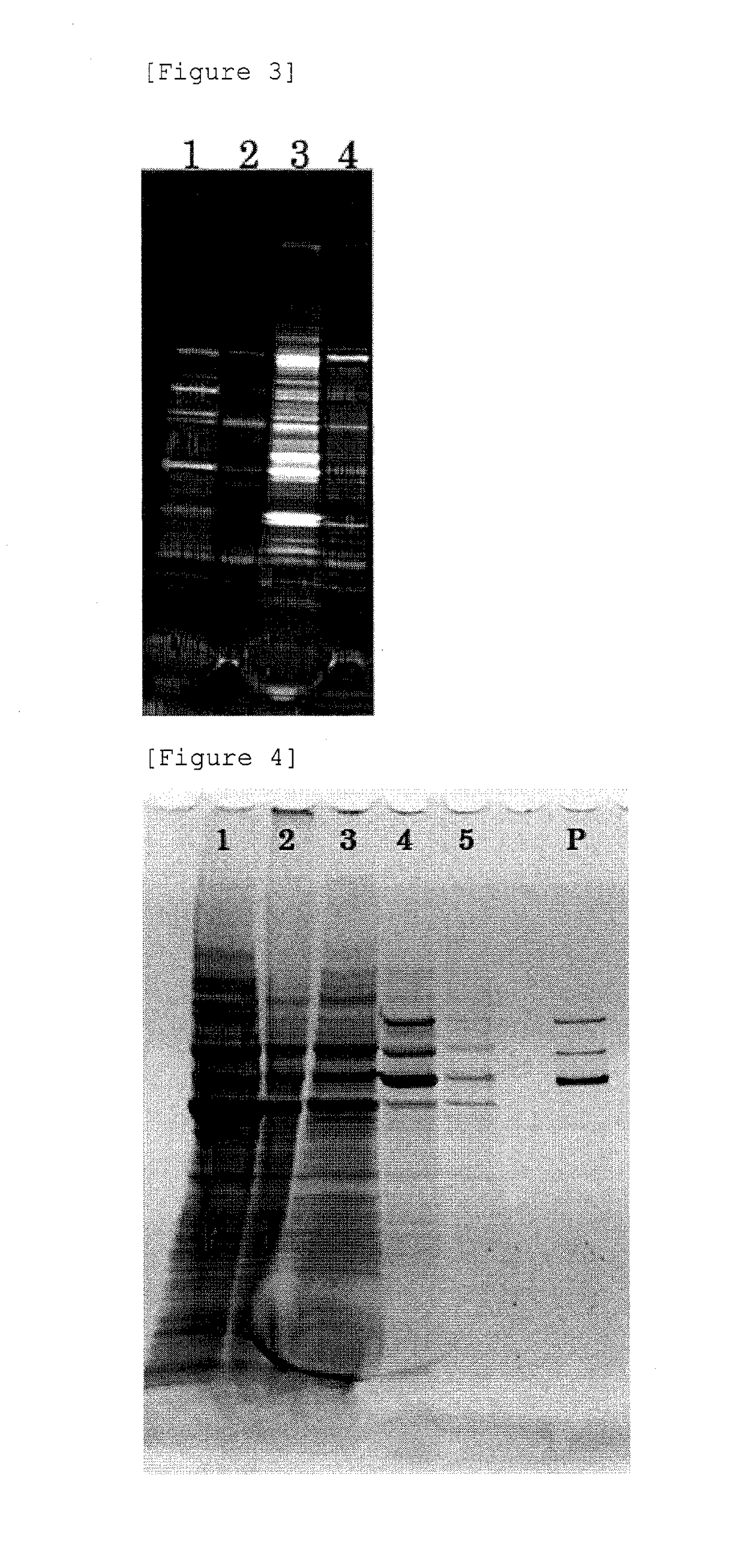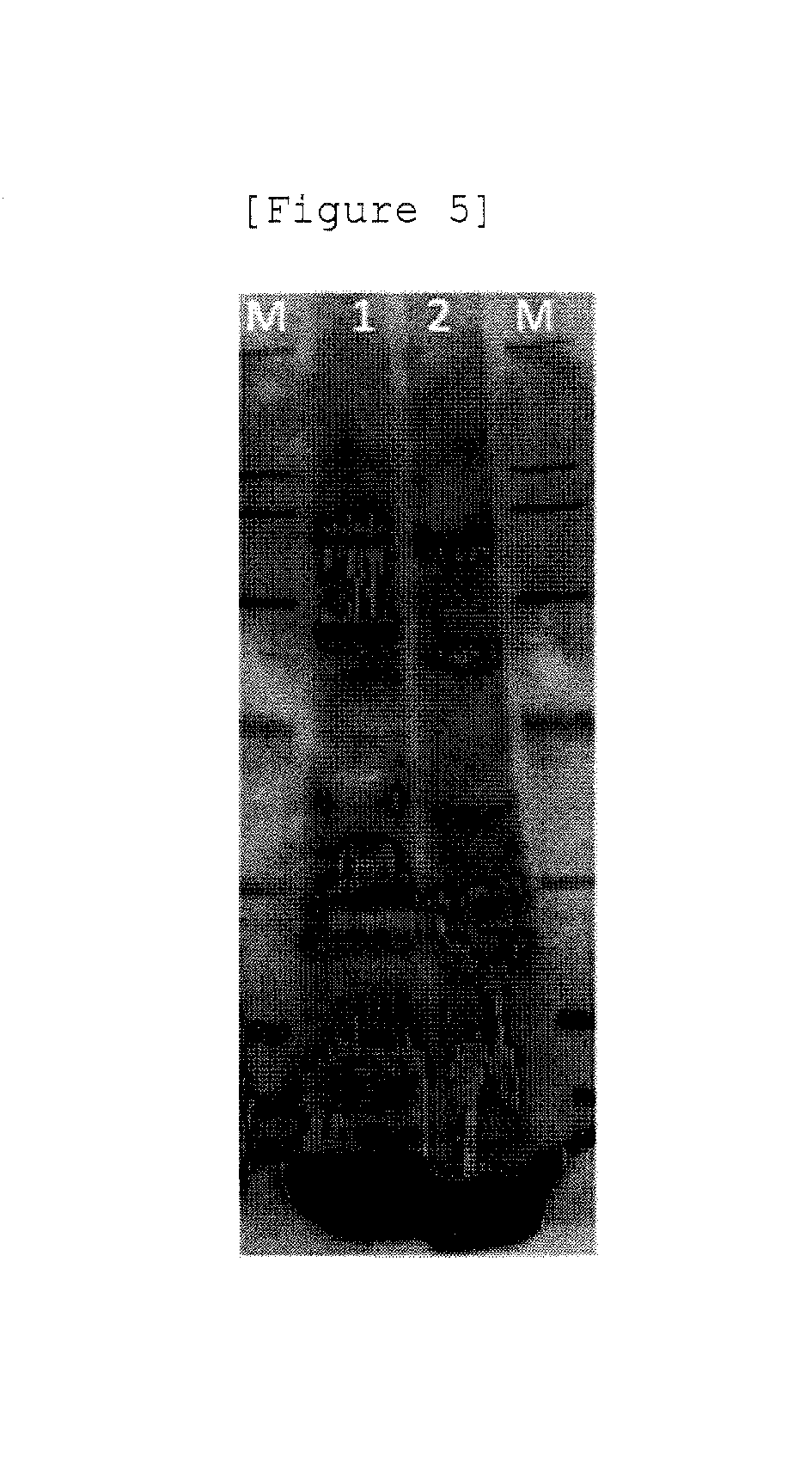Production method for non-enveloped virus particles
a production method and virus technology, applied in the field of non-enveloped virus particles, can solve the problems of inadequate purification methods, and achieve the effect of no laborious operation and high purity
- Summary
- Abstract
- Description
- Claims
- Application Information
AI Technical Summary
Benefits of technology
Problems solved by technology
Method used
Image
Examples
example 1
Investigation of PEG Concentration for Precipitation
[0054](1) Seeding of Cell for Production of rAAV Particle
[0055]In DMEM (manufactured by Sigma-Aldrich Co. LLC.) containing 10% FBS (manufactured by Hyclone Laboratories), 293T / 17 cells were suspended. The suspension was seeded in a CellBIND (registered trademark) T225 flask (manufactured by Corning Inc.), and then, cultured in a CO2 incubator at 37° C. for 3 days. The cells were confirmed to be about 70% confluent.[0056](2) Transfection of Plasmid for Production of rAAV Particle
[0057]The cells obtained by Example 1-(1) were transfected with each 25 μg of a pRC plasmid containing sequences encoding the Rep protein and the Cap protein of AAV type 2 (hereinafter, referred to as AAV2) (manufactured by Cell Biolabs, Inc.), a pHLP plasmid containing sequences encoding adenovirus-derived E2A, VA and V4 (manufactured by Cell Biolabs, Inc.), and a pAAV-AsRed2 plasmid containing “a CMV promoter sequence, a sequence encoding AsRed2, and a Pol...
example 2
Removal of Impurity by PEG Precipitation Operation
[0069](1) Preparation of Crude Extract by Citrate Buffer Treatment
[0070]A crude extract was prepared in the same manner as Example 1-(1) to (3). To the crude extract, 1 / 100 volume of 1 M MgCl2 was added, followed by treatment with BENZONASE at 37° C. for 1 hour.[0071](2) PEG Precipitation, Washing, and Concentration by 100K UF
[0072]The BENZONASE-treated crude extract obtained by Example 2-(1) was subjected to any one of the following treatment A to F to prepare a sample.
[0073]A: To the BENZONASE-treated crude extract, a 60% PEG-8000 solution was added so that the final concentration of PEG became 8%, mixed, and left standing on ice for 30 minutes. Then, the mixture was centrifuged at 1,500×g, at 4° C., for 30 minutes to collect a pellet. The pellet was suspended in PBS (manufactured by Gibco), and left standing overnight at 4° C. to dissolve the pellet. Thus sample A was prepared.
[0074]B: A pellet was obtained in the same manner as A...
example 3
Removal of Impurity by Combination of PEG Precipitation Operation and Chloroform Treatment
[0086](1) Preparation of Crude Extract by Citrate Buffer Treatment
[0087]A crude extract was prepared in the same manner as Example 1-(1) to (3). To the crude extract, 1 / 100 volume of 1 M MgCl2 was added, followed by treatment with BENZONASE at 37° C. for 1 hour.[0088](2) PEG Precipitation, and Chloroform Treatment
[0089]The BENZONASE-treated crude extract obtained by Example 3-(1) was subjected to any one of the following treatment G to J to prepare a sample.
[0090]G: To the BENZONASE-treated crude extract, an equal amount of chloroform (99% purity) was added, mixed by a vortex mixer for 10 seconds, and then centrifuged at 14,000×g, at 4° C., for 10 minutes to collect a supernatant (these operations are referred to as “the chloroform treatment”). To the supernatant, a 60% PEG-8000 solution was added so that the final concentration of PEG became 1%, mixed, and left standing on ice for 30 minutes. ...
PUM
| Property | Measurement | Unit |
|---|---|---|
| humidity | aaaaa | aaaaa |
| humidity | aaaaa | aaaaa |
| temperature | aaaaa | aaaaa |
Abstract
Description
Claims
Application Information
 Login to View More
Login to View More - R&D
- Intellectual Property
- Life Sciences
- Materials
- Tech Scout
- Unparalleled Data Quality
- Higher Quality Content
- 60% Fewer Hallucinations
Browse by: Latest US Patents, China's latest patents, Technical Efficacy Thesaurus, Application Domain, Technology Topic, Popular Technical Reports.
© 2025 PatSnap. All rights reserved.Legal|Privacy policy|Modern Slavery Act Transparency Statement|Sitemap|About US| Contact US: help@patsnap.com



